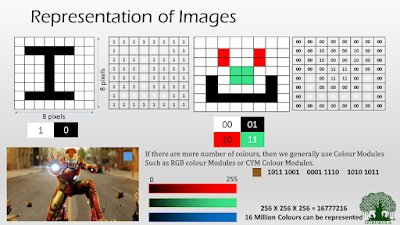Demystifying Data Storage: Unraveling Text, Images, Audio, and Video in Computers
Data storage is the foundation of the digital age. It is the process of encoding and storing data in a way that it can be retrieved and processed later. Computers use a variety of data storage techniques to store different types of data, including text, numbers, images, audio, and video.
In the vast and interconnected digital realm that defines our modern world, the seamless access and management of data have become an integral part of our daily lives. Behind the scenes of this technological marvel lies a sophisticated infrastructure responsible for the storage and retrieval of diverse data types, including text, images, audio, and video.
By the end of this blog post, you will have a comprehensive understanding of how data is stored in computers. You will be able to appreciate the marvels of technology that make it possible to store and retrieve vast amounts of data with ease.
In this article, we embark on an enlightening journey to demystify the intricate landscape of data storage within computers, shedding light on the inner workings of how different forms of information are handled and preserved.
How Computers Store Text Data
Text data is the cornerstone of communication and information exchange in the digital age. But have you ever wondered how computers manage to store the words we read and write? It's all about encoding.
Computers utilize character encoding standards such as ASCII (American Standard
Code for Information Interchange) or Unicode to represent characters, letters,
numbers, and symbols as unique numerical values. These numerical
representations are then stored in the computer's memory and can be manipulated
and retrieved as needed.
Each character is assigned a specific code that corresponds
to its numerical value, enabling computers to recognize and process text
efficiently. Whether you're drafting an email, writing code, or reading an
online article, the intricate process of text data storage ensures that the
words you see on your screen are faithfully represented.
How Computers Store Numbers
Numbers, the foundation of mathematical calculations and data analysis, are stored in computers using a binary system.
In this system,
numbers are represented as sequences of 0s and 1s, known as bits. A group of 8
bits forms a byte, which is the fundamental unit of data storage. Computers use
various data types, such as integers and floating-point numbers, to store and
manipulate numerical data. These data types determine the range and precision
of numbers that can be represented.
Through this binary encoding, computers effortlessly manage
the vast array of numerical information required for everything from simple
arithmetic operations to complex simulations and scientific computations.
How Computers Store Images
Images, whether photographs, graphics, or illustrations, are integral to our digital experiences. But how are these visual masterpieces stored in a computer's memory?
Image data is meticulously structured into a
grid of pixels, each pixel representing a tiny dot of color. The color
information for each pixel is encoded using various image formats such as JPEG,
PNG, and GIF.
When you capture a moment with your camera or create digital
art, the image is transformed into a digital representation. Each pixel's color
values are quantified and stored sequentially, forming a digital mosaic that
can be reconstructed into the original image when requested.
How Computers Store Audio
The world of audio is a symphony of sound waves, and
computers are adept at storing and reproducing these auditory delights. Audio
data is captured by sampling the analog sound waves at discrete intervals,
converting them into digital data points. Formats like MP3 and WAV use
compression techniques to reduce file sizes while retaining audio quality.
How Computers Store Video
Videos are a harmonious blend of moving images and
synchronized audio, creating a dynamic visual and auditory narrative. Storing
videos involves managing an immense amount of data. Video formats like MP4 and
AVI utilize advanced compression algorithms to maintain visual and audio
quality while minimizing file size.
In a video, individual frames are captured as images, and
each frame is accompanied by synchronized audio. These frames and audio
segments are encoded and stored in a sequence, allowing for smooth playback.
When you watch a video, your computer processes this sequence of frames and
audio, presenting you with a coherent audiovisual experience.
Wrapping Up
As we traverse the intricate landscapes of text, numbers,
images, audio, and video within the realm of computer data storage, we uncover
the awe-inspiring mechanisms that power our digital interactions. Every time
you read an article, admire an image, listen to music, or watch a video,
remember that beneath the surface lies a symphony of binary code, meticulously
orchestrated to provide you with a seamless and captivating experience.
With this newfound understanding, you are equipped to
appreciate the marvels of technology that bring the world of data to your
fingertips. So, whether you're crafting a message, analyzing data, enjoying
multimedia content, or engaging in a video call, you can now marvel at the
intricate dance of data storage that underpins it all. Stay curious, explore
further, and continue to embrace the wonders of the digital age!










Comments
Post a Comment